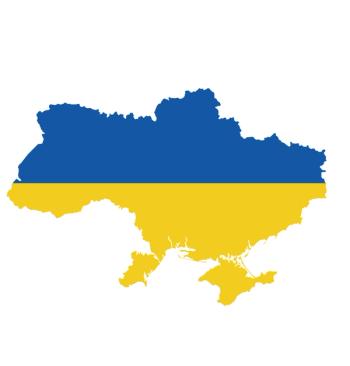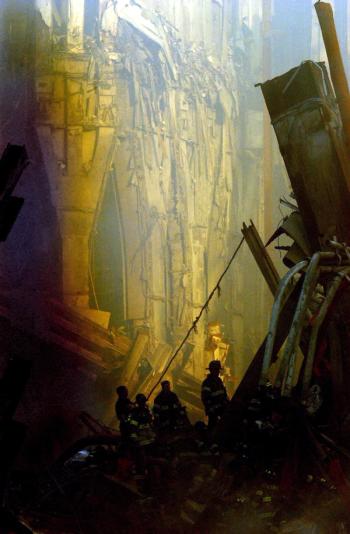
Can the Chilean Miners Let Go of a Primal Trauma?
The recent disaster that trapped 33 Chilean miners for the past 2 months piqued my curiosity as a psychiatric researcher: how will these hearty survivors cope with the aftermath of being buried alive?
One of the most terrifying (and depressing) movies I’ve ever seen was the 1988 film, TheVanishing, directed by George Sluizer-a film that hinges on its protagonist’s being buried alive. This is far from an original motif, as Susan King observed1 in a recent Los Angeles Times piece: Hollywood has used it many times, and Edgar Allen Poe’s story, “The Premature Burial,” explored this same horrific theme in 1844.
The recent disaster that trapped 33 Chilean miners for the past 2 months-as I write this, the last of the miners was just rescued-brought back these literary associations, and also piqued my curiosity as a psychiatric researcher: how will these hearty survivors cope with the aftermath of being buried alive? Is this particular trauma, by its very nature, more primal and terrifying than other traumatic events-such as experiencing a tsunami, an explosion, or a mugging? Does being buried alive tap into evolutionarily determined “fear pathways” in a manner not characteristic of other traumas? So far as I can determine from the published literature, there has been little systematic research on this question, which probably reflects the relative rarity of being buried alive and the paucity of psychiatric investigations in such instances.
To be sure: the Chilean miners were unlike the solitary victims in Sluizer’s film or Poe’s short story: the miners had the benefit of each other’s support; relative freedom of movement; and the ability to communicate with the outside world-not to mention, food and oxygen. Furthermore, the miners were quickly able to engage in “positive actions” that reduced their sense of helplessness and aided their rescuers. These are clearly important factors in reducing the “toxicity” of trauma. Nevertheless, I believe that on both a symbolic and a physiological level, premature burial represents a more comprehensively disturbing trauma than most seen in every-day life. Indeed, live burial contains primitive dimensions of terror-prolonged darkness, coldness, enclosure, and deprivation
Dr Paul Ragan, a former US Navy psychiatrist now associated with Vanderbilt University, is cited by USA Today as saying that at least 3 or 4 of the miners may experience post-traumatic stress syndrome, based on typical PTSD rates.3 Perhaps so, but I would not be surprised if PTSD rates among the Chilean miners were either substantially higher or lower than 3 or 4 out of 33. Higher rates might be seen if, indeed, “burial alive” represents an especially profound shock to the human psyche. Lower rates than predicted might be seen if the miners’ tremendous mutual support and contact with mental health professionals overcome the inherently traumatic elements of the “burial” experience. The miners’ underlying personality style, ego defenses, and psychic resiliency are all factors that may weigh in their favor, with respect to PTSD risk.
Indeed, recent neurophysiological research on PTSD suggests that the condition stems not so much from the trauma itself, as from a failure of traumatic memory “extinction” in certain predisposed individual. PTSD may represent a failure of recovery from trauma, in which traumatic memories-rather than fading with time-become more deeply engrained and “reconsolidated.” Recent evidence suggests that activation of mu opioid receptors may enhance extinction of traumatic memories, perhaps explaining the apparent benefit of morphine administration after combat injury.4 Beta blockers, such as propranolol, may also attenuate PTSD symptoms if given close to the time of trauma, though the clinical data are somewhat contradictory and have raised a number of ethical concerns.5
I wonder, as well, how contacts with the press and various media will affect the recovery process of the miners. Will questions from a reporter, such as “What did it feel like in the first few minutes after the mine collapsed?” affect the miners’ ability to “let go” of the trauma-perhaps shifting the ratio of traumatic memory extinction versus reconsolidation? It would seem a prudent part of the miners’ mental health care to limit contacts with the press for some time, so that these individuals can begin their healing process without risk of reactivating their trauma. These tough and resourceful survivors undoubtedly have much to teach the world-not just about PTSD, but about human courage and determination in the face of a primal trauma.
References:
References
1. King S: Being buried alive is old ground in the movies. Los Angeles Times, Oct. 1, 2010. Accessed at: http://www.dfw.com/2010/10/01/342832/being-buried-alive-is-old-ground.html
2. Castillo M: Rescued miner says he saw God, devil during captivity. CNN, October 13, 2010
3. Szabo L: Chile miners may face range of health problems. USA Today, 10/13/10. Accessed at: http://www.usatoday.com/yourlife/health/2010-10-13-chilehealth13_ST_N.htm
4. Holbrook TL, Galameau MR, Dye JL et al: Morphine Use after Combat Injury in Iraq and Post-Traumatic Stress Disorder. N Engl J Med 2010; 362:110-117
5. Brunet A, Orr SP, Tremblay J, et al: Effect of post-retrieval propranolol on psychophysiologic responding during subsequent script-driven traumatic imagery in post-traumatic stress disorder. J Psychiatr Res. 2008 May;42(6):503-6.
Newsletter
Receive trusted psychiatric news, expert analysis, and clinical insights — subscribe today to support your practice and your patients.














